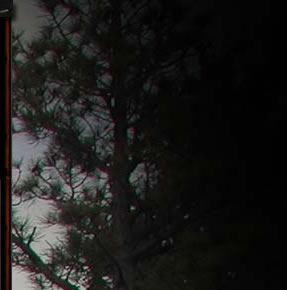


Propellant Choices:
Eliminating the Horror of Rusty Muzzleloaders
Most of us have seen them, or perhaps owned them. Muzzleloaders tend to destroy themselves if not maintained. Unfortunately, many muzzleloaders can destroy themselves even IF maintained, just not maintained fastidiously. While this might be good for some new gun sales, it rarely is good for your diminishing wallet thickness.
Much of this is perpetuated by marketing drivel and bad information that has been not just tolerated, but actively perpetuated by gun manufacturers and powder manufacturers for years. Tell a lie long enough and loud enough and it tends to stick. Sadly, some of it has stuck and muzzleloading consumers are the ones it usually gets stuck to.
Most metals do require reasonable care. Muzzleloaders come in a couple of popular forms, pre-rusted and not pre-rusted. There is “pretty rust” and not-so-pretty rust. You might be surprised at this notion. Gun metal “blue” is typically not blue at all, it is out course black. Black oxide, which is cosmetically more appealing than red oxide (“rust”) is a common gun barrel finish. It serves primarily as a medium to retain oil, eliminating surface to air direct contact of the metal.
Stainless (or “stainless finish”) muzzleloaders often have little or nothing in the way of surface coatings. While still capable of rusting, the chromium content slows and deters this propensity. In both cases, exterior finishes are easily maintained, of course, as they are both visible and accessible. What goes on deep inside your barrel is quite another matter. What dictates and defines maintenance needs is the propellant we choose over everything else. Ranking muzzleloader propellants by what they do to our barrels makes appropriate powder selection a simple matter. From the worst to the best, I’m listing them as best I can.
PYRODEX
Pyrodex is the nastiest, most invasive propellant in common use with little question. It is harder on most barrel metals than organic powder (“blackpowder”), and can etch stainless steel barrels as noted by Doc White many years ago. It stinks, and it sucks. With the huge negatives associated with Pyrodex, the most available barrel-rotter of the day, it might seem puzzling as to why the stuff gets used at all?
Well, it gets used because it works. Even though it is corrosive, moisture-sucking, and has a poor shelf life—it is consistent, cheap to make, and easy enough to use in so-called “blackpowder rifles.” Pyrodex has done a lot of things; dangerous enough to manufacture that it cost its inventor his life, yet so cheap to make in quantity it has made a fortune for Hodgdon Powder and set the stage for their monopoly of the relatively newly coined “black powder substitute” market. By virtue of its current ease of shipment (compared to blackpowder) and widespread availability—it has become a standard of sorts, even if the standard it has set defines dirty, corrosive, stinky, and filthy to many.
BLACKPOWDER
Organic blackpowder is less damaging to gun barrels than Pyrodex, to be sure. Its easy ignition makes it still the best choice for many applications. No other material is as suitable for pan powder and a variety of military and avalanche control applications. In fact, blackpowder is added as the “igniter pad” to Pyrodex pellets . . . where the loading of a pellet backwards may result in a misfire for #11 capped firearms.
Many, many current muzzleloading enthusiasts have never, ever tried black powder. This isn’t likely to change, despite its easy ignition and cheap cost make it the only suitable choice for some uses. Poor distribution, and current shipping and storage regulations have made it cumbersome and costly to make available in many areas. Neither good or bad; it is just the way it is.
SHOCKEY’S GOLD / AMERICAN PIONEER
This product has given us poor velocities, horribly erratic velocities, and is just not consistent enough to be worth the bother. It, like others in the “ascorbic acid” based family of propellants, is sulfur free and is less corrosive than Pyrodex and black powder. It is a worse-performing propellant than both, though, and often gives a peculiar hard crud at the muzzle. In general, this propellant is just too bad to use.
HODGDON’S TRIPLE SEVEN
Good, consistent velocities. No sulfur. Crud rings, frozen breech plugs, and it doesn’t “clean up with just water” better than blackpowder does. Nevertheless, widely available and it single handedly took the market by storm in 2002.
It has been inspiring. Inspiring enough to inspire the elimination of #11 caps, harder still in pellet form. The crud ring has inspired all kinds of primers and wild solutions (attempts) the clean up the hard, slag like fouling this gluconic acid smokeless powder creates.
It is available though, an available solution that is consistent enough to work with. Working with it requires a spit patch between sabots. In pellet form, reduced accuracy and erratic high pressures make it another type of inspiration. Since 2002, it has been the best we have had—primarily because the other stuff has been so bad (Shockey), unavailable, or just bad and unavailable.
BLACK MAG 3
It has been okay, then unavailable. It has been VERY bad, supplied in 1 pound lumps then unavailable. It has been VERY good, then unavailable. It is claimed to be back, but I find it unavailable. It has been less problematic with crud and corrosion than Triple Se7en, but Triple Se7en is available. This stuff only intermittently is. Call it the eternally unavailable maybe a solution to Pyrodex pollution, but I’m tempted to call it the Easter Bunny.
BLACKHORN 209
The best there has been to date in terms of low-to-no corrosivity, wonderful consistency, and good velocities. It also has the best shelf life of any “sub.” It is a smokeless powder in the sense that Triple Se7en (di-nitro sodium benzoate) is, as a practical matter. It gives similar performance to Triple Se7en loose powder without all the headaches and spit patching. Sure, all these powders are smokeless . . . they smoke less than blackpowder, where Captain Obvious invented the term.
Not only is Blackhorn 209 the best product for inline muzzleloaders I’ve seen, it is available! Blackhorn 209 works superbly in quality 209 fired muzzleloaders. You must use 209 primers just as you must use 209 primers according to Hodgdon with Triple Se7en. The crummy breechplugs that blow more fire from the sides of them than they get through the plug don’t work so well with Blackhorn 209. Ironically, some muzzleloader breechplug design has been a march to the rear, mostly due to attempts to handle Triple Se7en crud.
Blackhorn 209 is such a comparatively clean, consistent, long-shelf life propellant to use that the few muzzleloading companies that “just don’t get it” had better get it soon or will find themselves getting out of it. For those that have already experienced the accuracy and user-friendliness of Blackhorn 209, any inline that cannot ignite it properly is an inline rifle not worth wasting your money on. Blackhorn 209 eliminates the “Horror of Rusty Muzzleloaders” like no other propellant sufficiently accurate for long range hunting use. BH209 improves the inline muzzleloading experience vividly. It is about time.
The rest of the “inline muzzleloading in place of blackpowder” substitutes are now obsolete. It has been past time for this, since the first sub rotted its first barrel and the improved versions seized their first breechplugs only to rot barrels at a slower pace. Those days are over.
Boy, am I ever glad for that.
Copyright 2008 by Randy Wakeman. All Rights Reserved.

Custom Search



